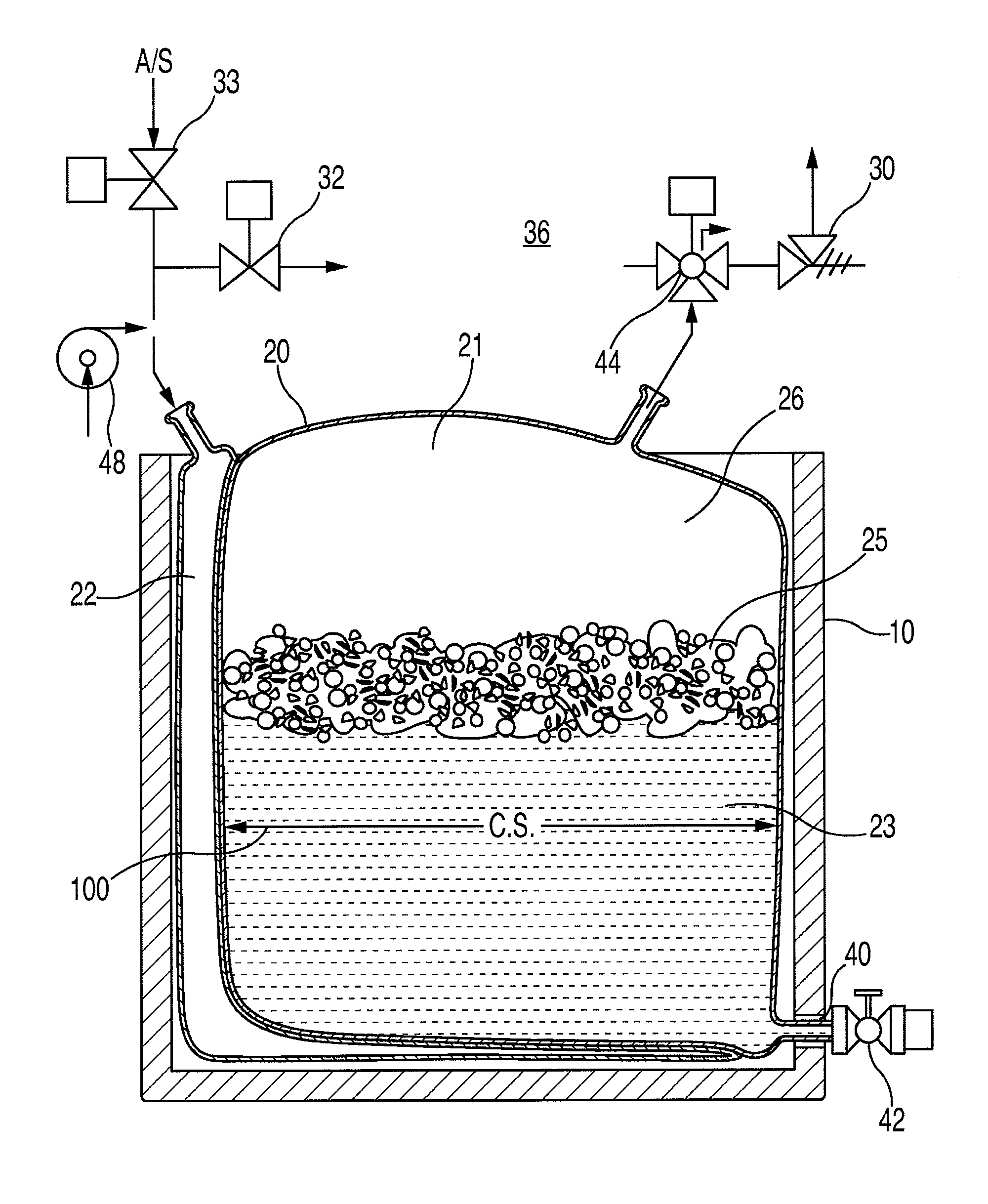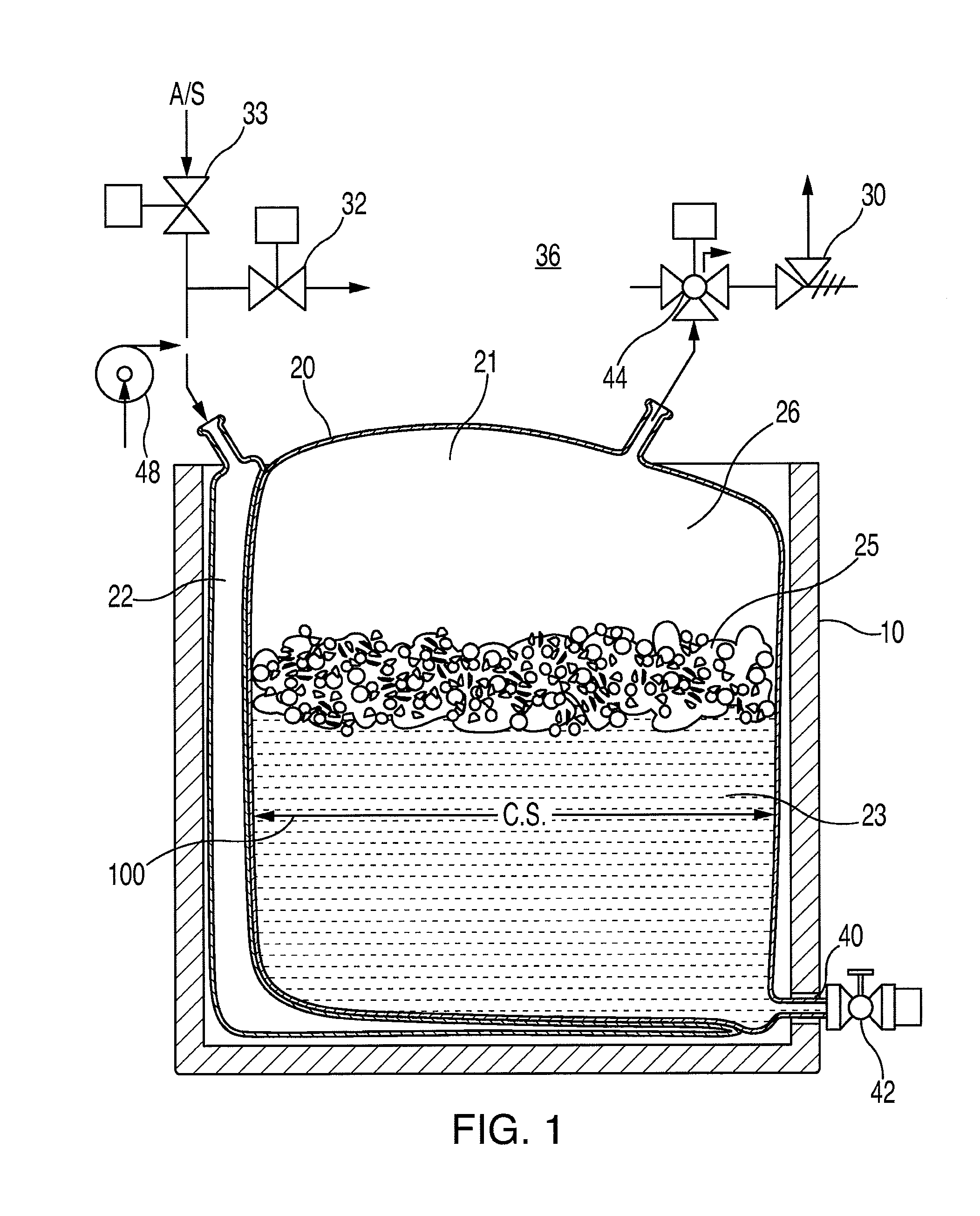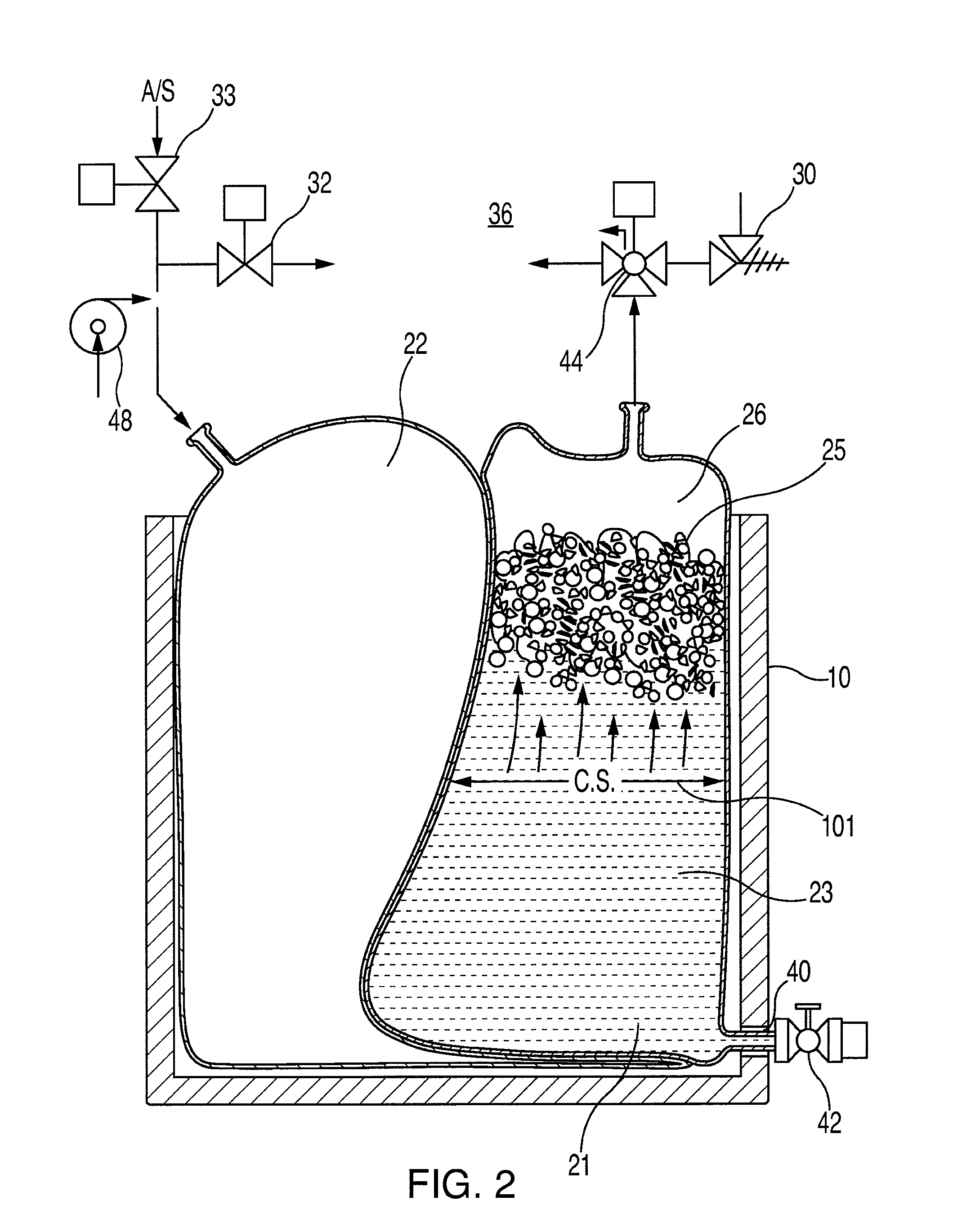Disposable wine fermentaton vessel with cap management and integral press
a technology of fermentaton vessel and cap, which is applied in the direction of presses, manufacturing tools, transportation and packaging, etc., can solve the problems of completely deflating the pressurization chamber, achieve better cap management, facilitate the agitation of the cap, and reduce waste water generation.
- Summary
- Abstract
- Description
- Claims
- Application Information
AI Technical Summary
Benefits of technology
Problems solved by technology
Method used
Image
Examples
Embodiment Construction
[0026]Exemplary embodiments are discussed in detail below. While specific exemplary embodiments are discussed, it should be understood that this is done for illustration purposes only. In describing and illustrating the exemplary embodiments, specific terminology is employed for the sake of clarity. However, the embodiments are not intended to be limited to the specific terminology so selected. Persons of ordinary skill in the relevant art will recognize that other components and configurations may be used without departing from the true spirit and scope of the embodiments. It is to be understood that each specific element includes all technical equivalents that operate in a similar manner to accomplish a similar purpose. The examples and embodiments described herein are non-limiting examples.
[0027]Referring now to the drawings, wherein like reference numerals and characters represent like or corresponding parts and steps throughout each of the views, there is shown in FIG. 1 a side...
PUM
| Property | Measurement | Unit |
|---|---|---|
| volume | aaaaa | aaaaa |
| volume | aaaaa | aaaaa |
| volume | aaaaa | aaaaa |
Abstract
Description
Claims
Application Information
 Login to View More
Login to View More - R&D
- Intellectual Property
- Life Sciences
- Materials
- Tech Scout
- Unparalleled Data Quality
- Higher Quality Content
- 60% Fewer Hallucinations
Browse by: Latest US Patents, China's latest patents, Technical Efficacy Thesaurus, Application Domain, Technology Topic, Popular Technical Reports.
© 2025 PatSnap. All rights reserved.Legal|Privacy policy|Modern Slavery Act Transparency Statement|Sitemap|About US| Contact US: help@patsnap.com



